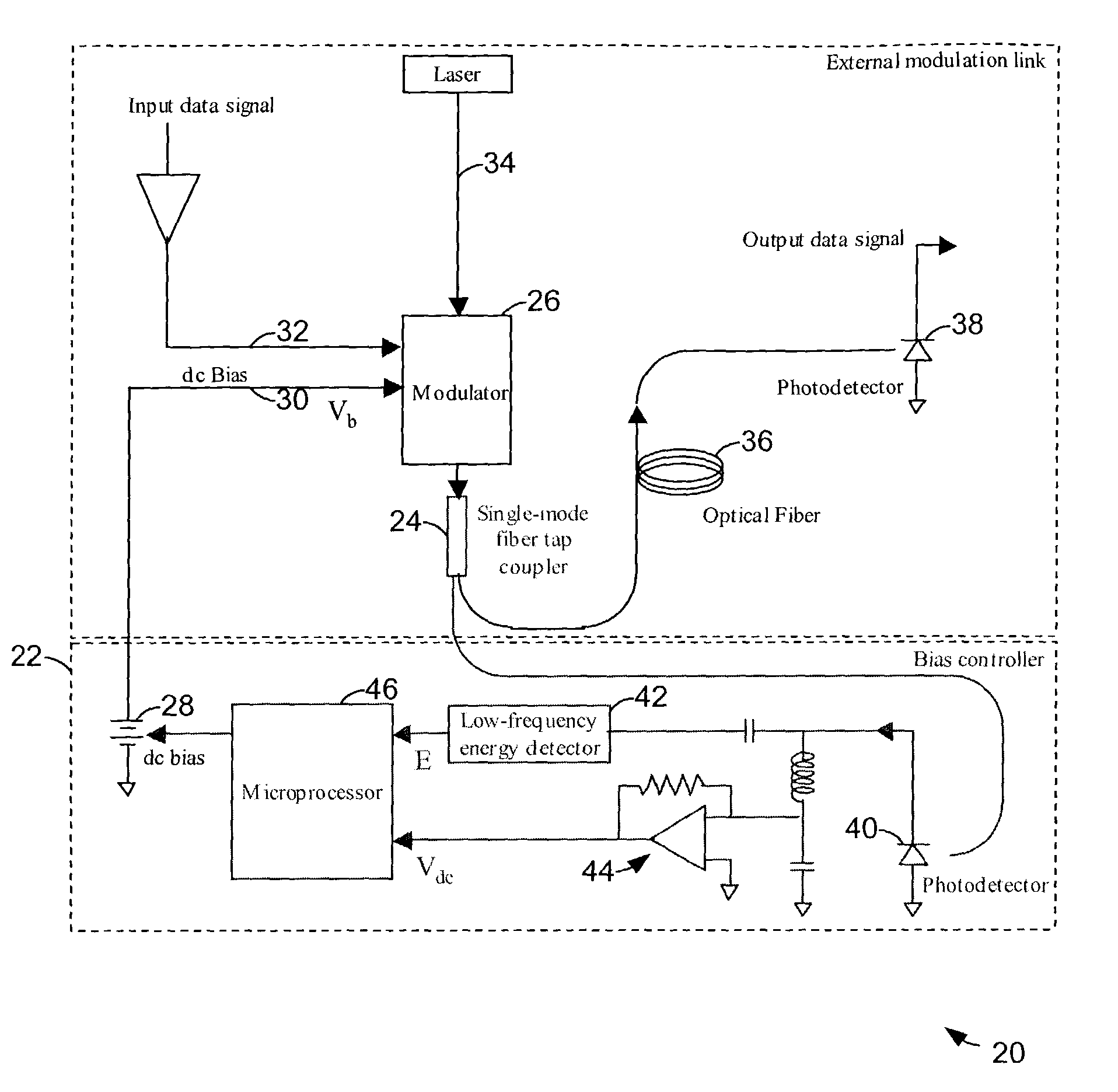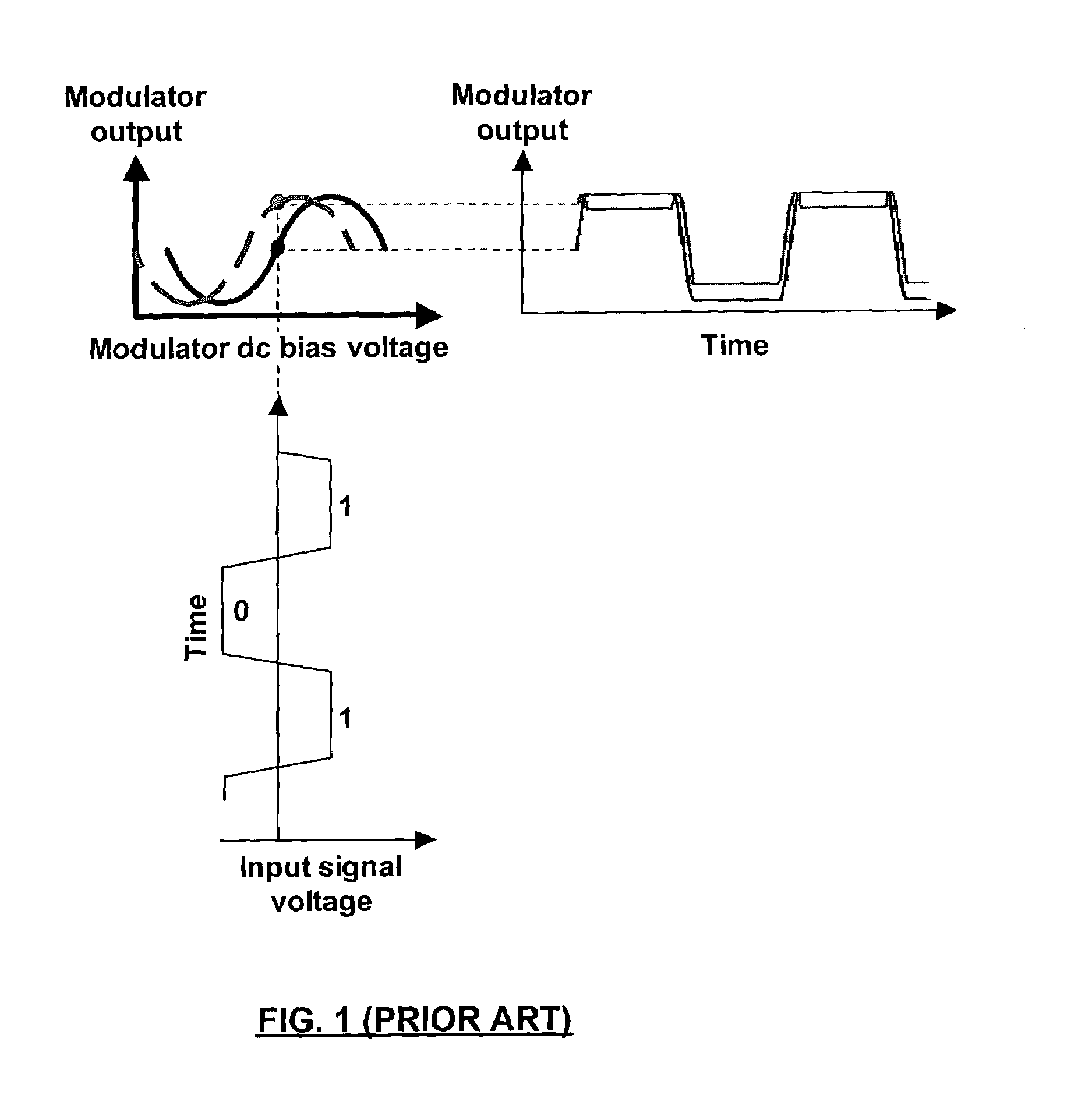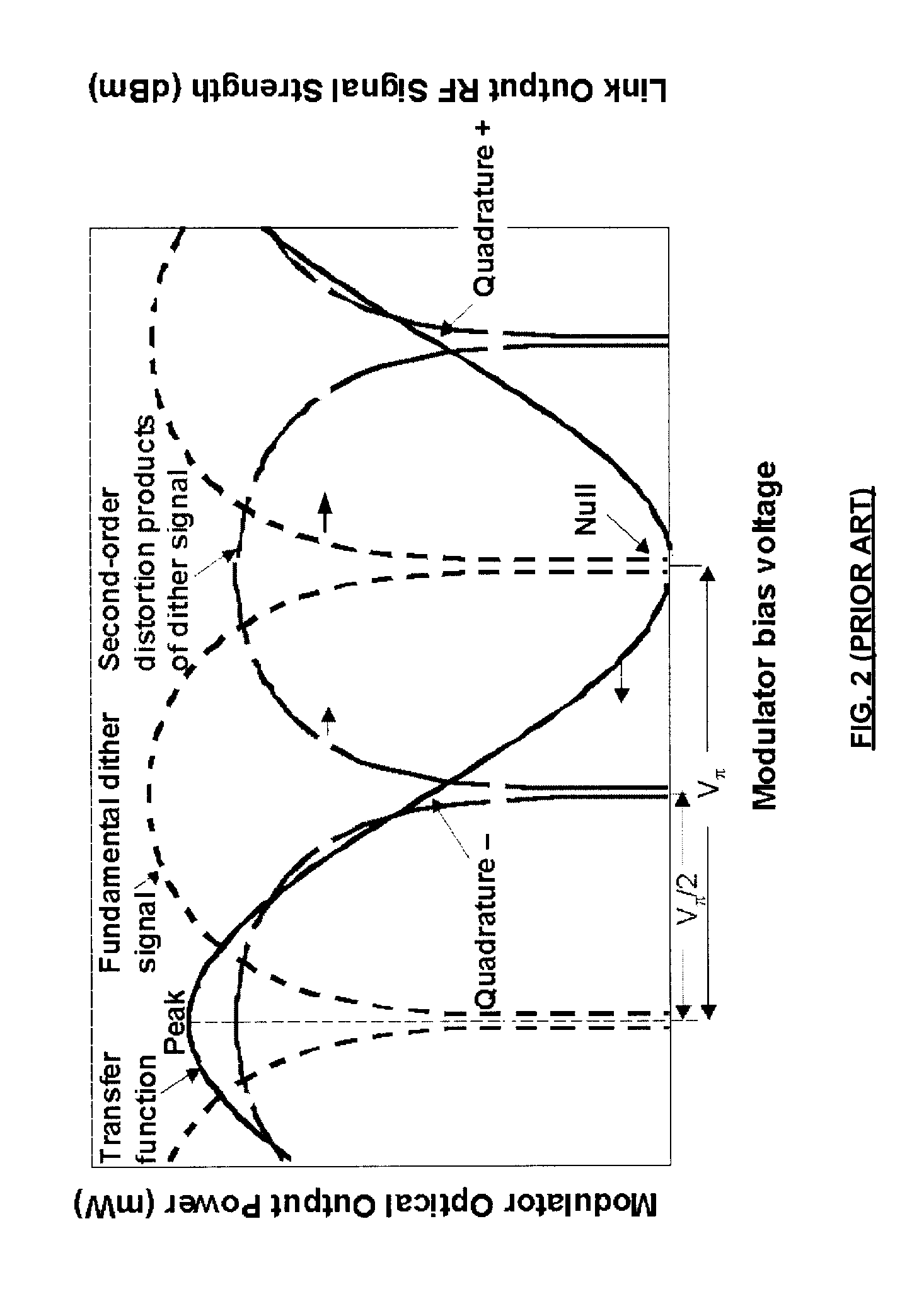Modulator bias control
a technology of bias control and optical modulator, applied in the field of bias control of optical modulators, can solve the problems that the method of controlling the bias point of an optical modulator is believed to fail to effectively maintain the optimum bias point, and achieve the effect of minimising adverse consequences
- Summary
- Abstract
- Description
- Claims
- Application Information
AI Technical Summary
Benefits of technology
Problems solved by technology
Method used
Image
Examples
Embodiment Construction
[0024]Referring to FIG. 6, a modulation bias control system 20 according to one aspect of the invention can include a bias controller 22 having an input operatively connected to one of the outputs of a single-mode fiber tap coupler 24 at the output of a modulator 26. The bias controller has an output operatively connected to an adjustable direct current (DC) bias source 28. An output 30 of the bias source is operatively connected to a bias input of the modulator, which is also operatively connected to a data signal input 32 and an output of a source of optical energy 34, such as a laser. The second output of the coupler can be operatively connected via a communications channel, such as an optical fiber 36, to a remote destination, such as a remote photodetector 38.
[0025]The bias controller can include a photodetector 40 followed by a low frequency energy detector 42 and an optional low-pass filter 44 (to provide information about the average optical power out of the modulator, which...
PUM
 Login to View More
Login to View More Abstract
Description
Claims
Application Information
 Login to View More
Login to View More - R&D
- Intellectual Property
- Life Sciences
- Materials
- Tech Scout
- Unparalleled Data Quality
- Higher Quality Content
- 60% Fewer Hallucinations
Browse by: Latest US Patents, China's latest patents, Technical Efficacy Thesaurus, Application Domain, Technology Topic, Popular Technical Reports.
© 2025 PatSnap. All rights reserved.Legal|Privacy policy|Modern Slavery Act Transparency Statement|Sitemap|About US| Contact US: help@patsnap.com



